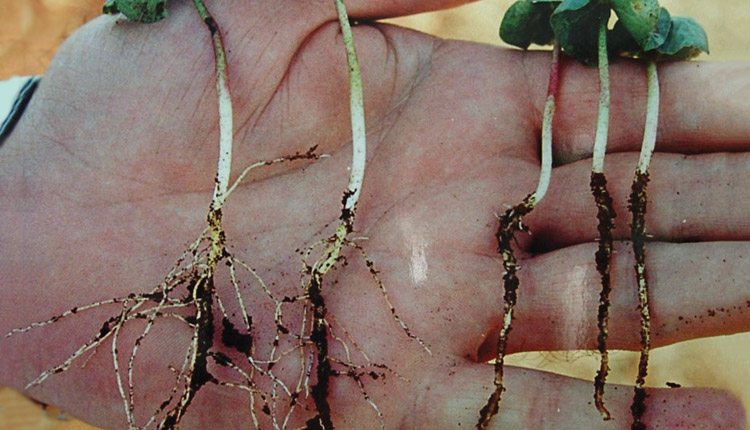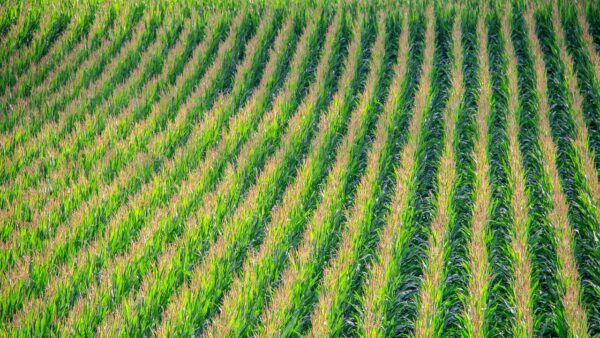Nutrition plays a critical role in early seed development and new research demonstrates its impact at the farm level.
Everyone involved in the supply chain, from seed companies to chemical companies and from equipment dealers to cooperatives, is working to help farmers maximize the genetic potential found in every bag of seed.
While it’s important to note that not all seed is created equal, steps can be taken to help that seed produce to the best of its ability. Some of the newest research shows that emphasis on nutrition during the seed production phase and early season nutrition on the farm are two areas that can lead to increased yields.
“The concept of delivering a more nutrient-rich seed is new,” says David Sippell, CEO of AgriThority, a consulting group based out of Kansas City, Mo., that focuses on the science of agriculture. “New research shows that micronutrients applied during seed production results in a much stronger seed for farmers. This means increased seed vigor, a better germination rate and higher yields.
“Micronutrients are actually creating a more nutrient-dense seed. The seed does better in the first 30 days coming out of the ground, which helps set farmers up for success.”
Sippell explains a few seed companies are applying micronutrients as a fertilizer when they sell the seed, but an additional approach is the use of micronutrients during the seed production phase.
This is an area in which Ismail Cakmak, a plant scientist at Sabanci University in Istanbul, Turkey, specializes. He says that little attention is paid to the importance of seed nutrient reserves in production agriculture, but it’s well known that larger seeds represent better seed vigor and field establishment. These larger seeds, Cakmak says, are often attributed to increased seed nutrient density.
Depending on the crop, some of these nutrients include zinc, phosphorus, iron, boron and nitrogen.
Cakmak says that plants need up to 75 percent of their total phosphorus during the early growth stage. “Very early season phosphorus is more critical in achieving better yields than the supply of phosphorus at a later growth stage,” he adds, highlighting the importance of seed phosphorous reserves.
When seeds have sufficient nutrient reserves, the results are noticeable to the eye when looking at above ground biomass, germination and stand uniformity, Cakmak says.
“Seed quality is so important,” Sippell adds. “Good seed with uniform establishment positions the plant for 30 days of rapid growth.
“If you don’t have this, the chance of having a really good crop decreases.”
While seed production companies can hone in on developing a more nutrient-dense seed, dealers and agronomists can help make sure the seed has the nutrients it needs once it’s in the ground.
Nutrition in the Field
Nutrient management involves complex interactions between the soil, plant and nutrient,” explains Josh Krenz, CEO and strategic counsel of Vivid Life Sciences — a company that specializes in advanced nutritionals, biologicals and enhancement technologies.
“For instance: a plant needs zinc to use phosphorus,” he says. “If a field is deficient in phosphorus, it doesn’t matter how much zinc you apply, the plant can’t access it.
“They all feed off each other — it’s managing that interaction to get the ideal reaction and keeping everything in balance.”
One nutrient that experts are honing in on to help increase corn yield is zinc.
“Zinc is an essential element that helps the seed break dormancy,” Krenz says. “When the plant produces seed, it naturally produces zinc in the seed but at a lesser amount than what is needed to get it out of the ground and sustain early growth.”
Krenz’s team is adding zinc as a treatment to seed in a number of forms to see what works best in different regions, soils and hybrids. The result is early, consistent emergence with bigger and better root systems, he says.
Two other micronutrients that soybean and wheat farmers should monitor are manganese and copper. Krenz says these help with cell development and are crucial in the first 14 days. They, too, can be applied as a seed treatment.
Spring weather often brings varying unfavorable weather, including cold and saturated soil. “If it’s cold, having these nutrients right on the seed is better than broadcast,” Krenz says. “Putting zinc directly on the seed gives the plant what it needs and is more sustainable.
“With increasing fertilizer regulations coming down the pipeline, we are putting those nutrients right where they need to be; they get used up and are essentially gone.”
So what are the measurable results? According to Winfield’s Answerplot.com, the average yield increase for corn with a zinc seed treatment is 3.5 bushels per acre. But Krenz says yield isn’t necessarily an accurate indicator of performance when evaluating the efficacy of nutrients.
“There are so many variables that must be taken into account when it comes to yield — weather, insect and disease pressures, water availability,” he says.
When analyzing the results, the first thing that Krenz measures is root size.
“We measure the plant stand both above and below ground,” he says. “Above ground measurements include weighing the dry matter, taking tissue samples and phenotyping.
“The tissue samples help us understand if the nutrients made it to the right place and they are in the plant. We also check chlorophyll levels and measure NDVI (Normalized Difference Vegetation Index).”
Krenz says early results show that the treatment does what we want.
“We do everything we can to get the plant off to the right start,” he says, “and then we do measure yield.”
Krenz says there’s a great deal that needs to be done to ensure growers get the most value out of every bag of seed. “That’s why you see the big seed and chemical companies spending so much money and energy on biostimulants and microbials; early seed development is so critical to the rest of the growing season,” he notes.
A part of early seed development is getting a good root system in place.
Taking Root
This is especially critical in corn, says Doug Kirkbride, a product development agronomy manager at Syngenta, who says the focus should still be nitrogen, phosphorus and potassium and then sulfur, manganese and calcium.
It’s important for growers to use a good seed treatment to protect the seed from insects, diseases and nematodes so the plant can have maximum nutrient uptake. Kirkbride says Syngenta’s Avicta Complete Corn and Clariva Complete Beans are good options. Any time the root is damaged, it limits uptake and efficiency.
He explains that greater than 90 percent of the plant’s nutrients are taken up through the roots; the roots act as a super highway bringing up water and nutrients. That’s why early season development is so critical, he says.
Phosphorus plays a pivotal role in root development. The first root system is the seminal root system, of which water uptake is 98 percent of its function. Between the V3 stage, when the plant has three leaf collars, and the V5 stage, it switches from getting nutrients from the seminal system and the seed to getting them from the nodal system.
For this reason, Kirkbride prefers a 2×2 application, putting the nutrients 2 inches from the seed and 2 inches deep.
“This puts the nutrients a little farther away from the seed, reducing the risk of seedling damage,” he says. “You don’t want to exceed 70 pounds of nitrogen plus potash in that type of environment, or it can become too salty. Yet, you get a quicker response compared to a general broadcast application.”
Kirkbride says that by the time the plant switches from the seminal system to the nodal system, the roots are long enough to be in that 2×2 zone — right where those nutrients are located.
“This will give the seed an overall nutrient benefit instead of trying to build the soil,” he says. “Have you ever seen a crop look stagnant? That’s an indicator that those roots are looking for nutrients.”
With regard to zinc and manganese, growers only need about nine-tenths of a pound of zinc and one-half pound of manganese to get 300 bushel per acre corn, Kirkbride says. “It’s such a small amount that a seed treatment is a good option,” he notes. “Some farmers are adding it in-furrow.
“It all comes back to management styles and nutrient availability. Keep in mind this all takes time — some farmers choose to manage nutrients up front, while others choose to get the crop in the ground and then manage nutrients.”
Managing for Today’s Environment
Given the low commodity prices farmers see today, many are looking for ways to decrease input costs.
“We know how much it takes for 300 bushel per acre corn and 100 bushel per acre soybeans,” Kirkbride says. “Anytime farmers cut back, they might not be hitting the bare minimum. Farmers have to hit the base.”
If a farmer is looking for ways to decrease their costs, Kirkbride recommends encouraging them to look at when and how those nutrients are applied.
“With a 2×2 application, those nutrients are right there and more available to the plant, which reduces the amount needed,” he says. “Additionally, encourage them to seek out alternative nutrient sources, such as livestock producers who have poultry litter or swine manure.”
But before all of this, Kirkbride says soil pH and liming practices must be in line. “If this is wrong, it can be more detrimental to the crop,” he says. “Farmers can apply all the nutrients they want but the soil can tie it up and make it unavailable to the plant.”
The experts agree: overall, early season nutrition is highly important.
“Early season is not the time when the plant takes up the most nutrients, but it’s the most important because the plant is putting down its root system,” Kirkbride says.















